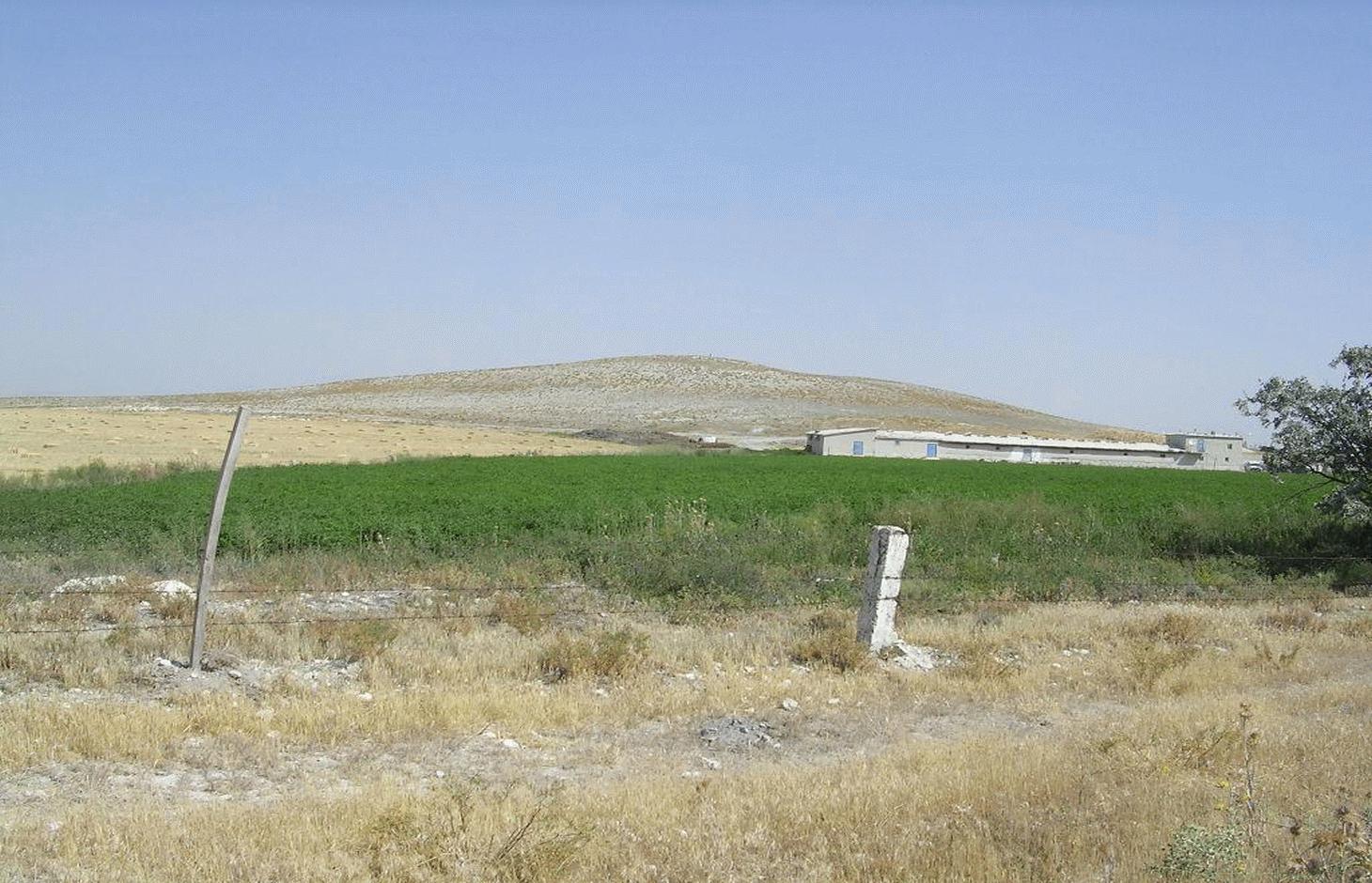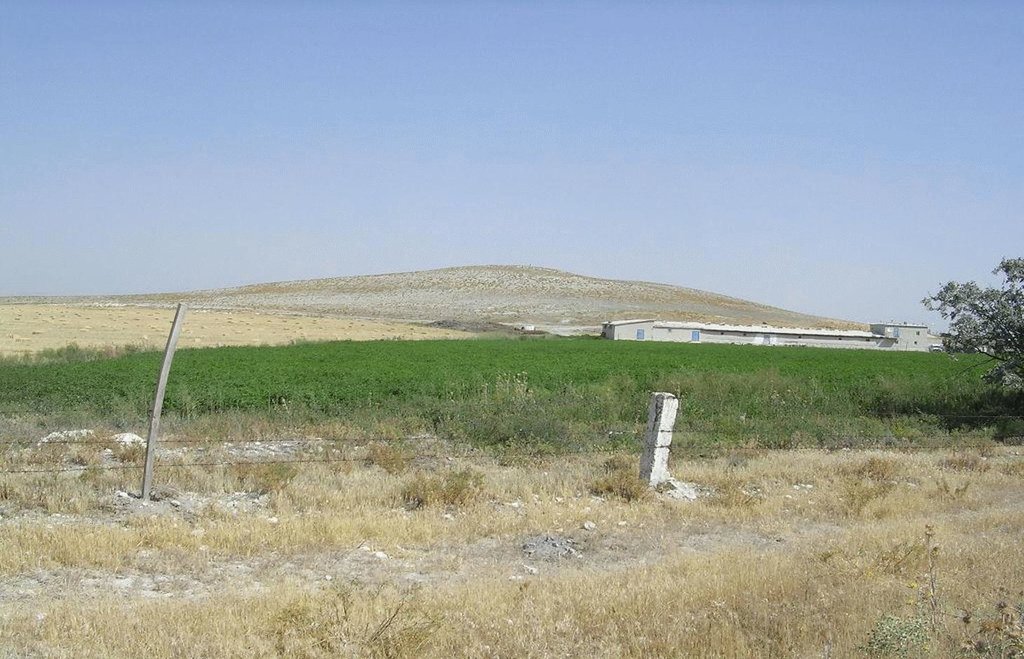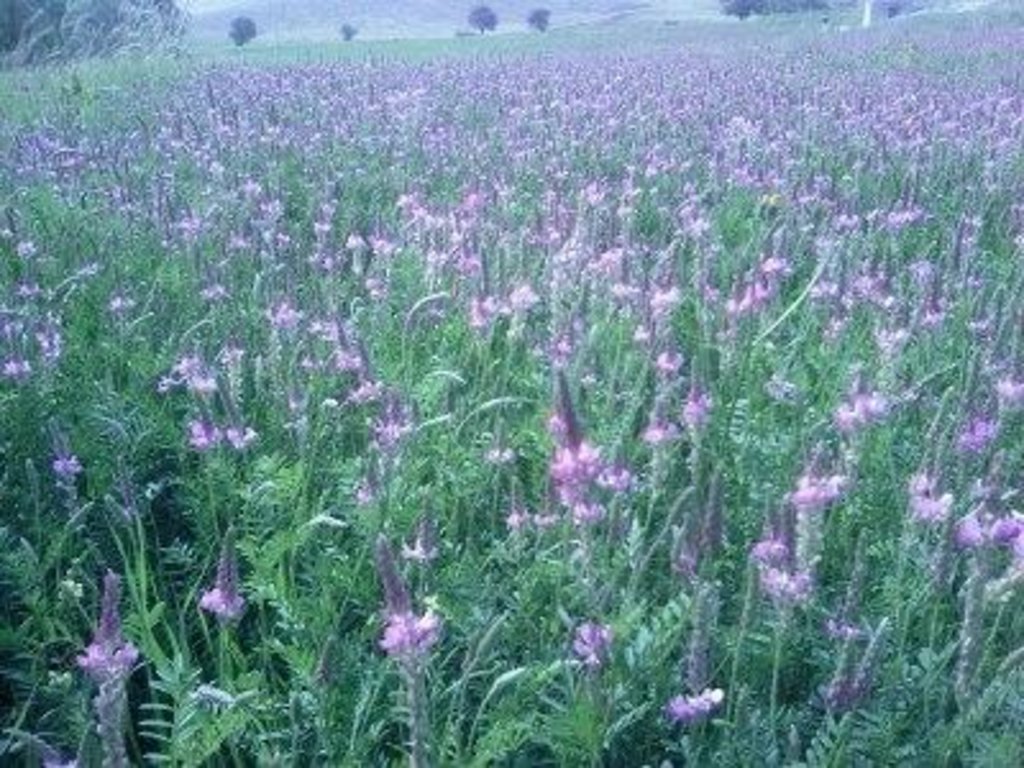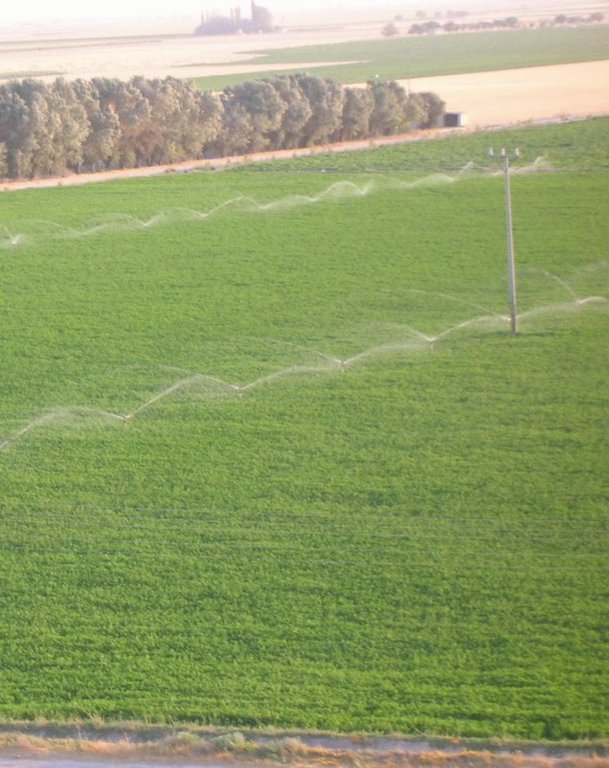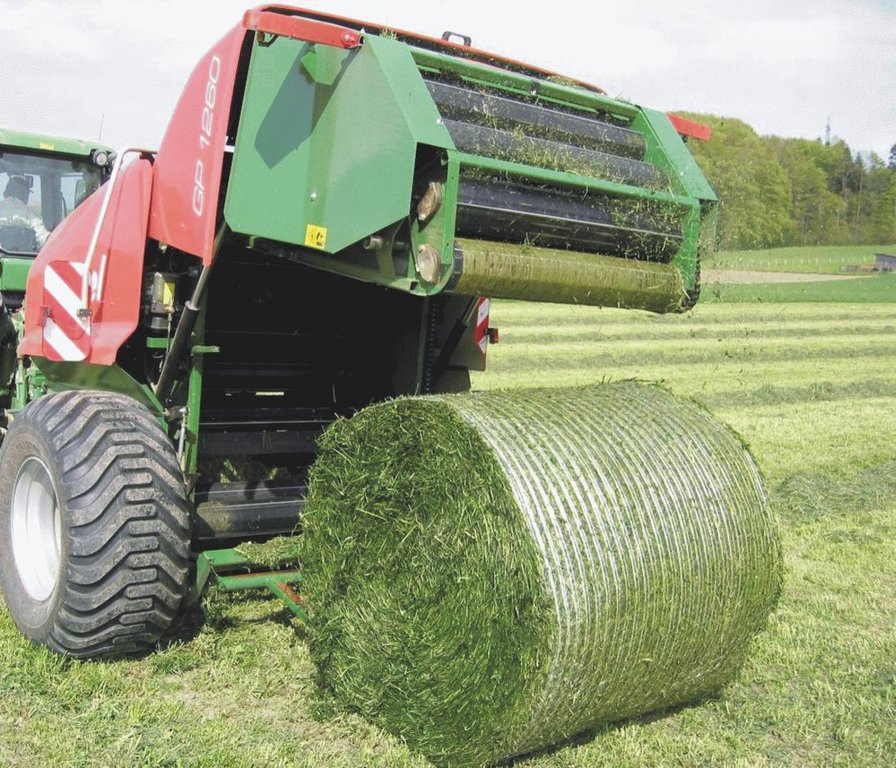Fodder Crop Production [Türkiye]
- Creation:
- Update:
- Compiler: Faruk Ocakoglu
- Editor: –
- Reviewer: Fabian Ottiger
Yem Bitkileri Yetiştiriciliği (Turkish)
technologies_1015 - Türkiye
View sections
Expand all Collapse all1. General information
1.2 Contact details of resource persons and institutions involved in the assessment and documentation of the Technology
Key resource person(s)
SLM specialist:
Inci Tolay
+90 222 239 37 50
incitolay@akdeniz.edu.tr
Eskişehir Osmangazi University, Faculty of Agriculture
Dede Mahallesi, 26030 Odunpazarı/Eskişehir Province, Turkey
Türkiye
Resident:
Caz Azmi
Keskin Village/ Eskişehir
Türkiye
Name of the institution(s) which facilitated the documentation/ evaluation of the Technology (if relevant)
Eskisehir Osmangazi University (Eskisehir Osmangazi University) - Türkiye1.3 Conditions regarding the use of data documented through WOCAT
When were the data compiled (in the field)?
07/07/2011
The compiler and key resource person(s) accept the conditions regarding the use of data documented through WOCAT:
Ja
2. Description of the SLM Technology
2.1 Short description of the Technology
Definition of the Technology:
Production of fodder crops every year both for feeding livestock and increasing soil fertility.
2.2 Detailed description of the Technology
Description:
Fodder crops (maize, alfalfa, sainfoin, common vetch, triticale, oat, fodder beet, wheat and barley) are grown for hay production for livestock feeding. Growing fodder crops is a part of sustainable agriculture. The soil is protected in dry farming areas by covering the soil surface and leguminous fodder species (alfalfa, sainfoin, common vetch), which increases the soil fertility by nitrogen fixation. Applying the technology does not require extra inputs different from other agricultural crops. All that is needed is to identify a crop rotation plan including fodder production and regular agricultural crops.
Purpose of the Technology: Different fodder crops (legumineous and gramineous plants) are produced to feed the farmers’ own livestock. By enabling widespread and dense surface cover, It helps both in dry farming and irrigated areas to protect the soil from water and wind erosion.
Establishment / maintenance activities and inputs: Usually the soil is first ploughed. Soil cultivation machinery (tractor, disc plough, wide-sweep cultivator, disc harrow, fertilizer and seed drill) is used to prepare the soil for cultivation, to fertilize the soil and to sow the seeds. After seeding and growing of the crops, special machinery is used for harvesting.
Natural / human environment: Farmers who produce both livestock and field crops in particular can use this technology and get an improved benefit. They can increase income and at the same time protect their soil.
2.3 Photos of the Technology
2.5 Country/ region/ locations where the Technology has been applied and which are covered by this assessment
Country:
Türkiye
Region/ State/ Province:
Eskişehir
Further specification of location:
Keskin Watershed
Map
×2.6 Date of implementation
If precise year is not known, indicate approximate date:
- more than 50 years ago (traditional)
2.7 Introduction of the Technology
Specify how the Technology was introduced:
- as part of a traditional system (> 50 years)
3. Classification of the SLM Technology
3.2 Current land use type(s) where the Technology is applied

Cropland
- Annual cropping
Main crops (cash and food crops):
Major cash crop annual cropping: gramineous fodder species
Major cash crop perennial (non-woody) cropping: leguminous fodder species

Grazing land
Extensive grazing land:
- Ranching
Main animal species and products:
Main livestock species: Cow, sheep, goat
Comments:
Major land use problems (compiler’s opinion): monoculture in dry farming areas, insufficient irrigation and rainfall, overgrazing, false cultivation techniques.
Major land use problems (land users’ perception): Insufficient technical help and interest to agriculture problems by government, urbanization pressure, land fragmentation, monoculture in dry farming areas, insufficient irrigation and rainfall, overgrazing, false cultivation techniques.
Ranching: cow, sheep,goat
Other grazingland: agropastoralism
Livestock is grazing on crop residues
Constraints of settlement / urban: some legal problems
Constraints of recreation: no problem
3.3 Further information about land use
Comments:
Water supply: mixed rainfed - irrigated, rainfed, mixed rainfed - irrigated, full irrigation
Number of growing seasons per year:
- 1
Specify:
Longest growing period in days: 180Longest growing period from month to month: Nov - Apr
Livestock density (if relevant):
25-50 LU /km2
3.4 SLM group to which the Technology belongs
- improved ground/ vegetation cover
3.5 Spread of the Technology
Specify the spread of the Technology:
- evenly spread over an area
If the Technology is evenly spread over an area, indicate approximate area covered:
- 10-100 km2
Comments:
Farmers think that the technology is helpful for livestock feeding and for increasing soil fertility
3.6 SLM measures comprising the Technology

agronomic measures
- A2: Organic matter/ soil fertility
Comments:
Main measures: agronomic measures
Type of agronomic measures: better crop cover, relay cropping, cover cropping, retaining more vegetation cover, legume inter-planting, rotations / fallows
3.7 Main types of land degradation addressed by the Technology

chemical soil deterioration
- Cn: fertility decline and reduced organic matter content (not caused by erosion)
- Cs: salinization/ alkalinization

physical soil deterioration
- Pk: slaking and crusting

biological degradation
- Bl: loss of soil life
- Bp: increase of pests/ diseases, loss of predators
Comments:
Main type of degradation addressed: Cn: fertility decline and reduced organic matter content
Secondary types of degradation addressed: Cs: salinisation / alkalinisation, Pk: sealing and crusting, Bl: loss of soil life, Bp: increase of pests / diseases, loss of predators
Main causes of degradation: crop management (annual, perennial, tree/shrub) (Monocropping is dominant), land tenure, governance / institutional
Secondary causes of degradation: over-exploitation of vegetation for domestic use, overgrazing (Regular management in pasture is needed), urbanisation and infrastructure development (There are border and legislative problems), disturbance of water cycle (infiltration / runoff) (Destroying of soil vegetation cover increase the evapotranspiration of soil water), over abstraction / excessive withdrawal of water (for irrigation, industry, etc.) (In recent year low rainfall occurs), population pressure, education, access to knowledge and support services
3.8 Prevention, reduction, or restoration of land degradation
Specify the goal of the Technology with regard to land degradation:
- prevent land degradation
- restore/ rehabilitate severely degraded land
Comments:
Main goals: prevention of land degradation
Secondary goals: rehabilitation / reclamation of denuded land
4. Technical specifications, implementation activities, inputs, and costs
4.1 Technical drawing of the Technology
4.2 Technical specifications/ explanations of technical drawing
A special harvesting machine used to bale fodder
Technical knowledge required for field staff / advisors: moderate (state advisors are generally aquitained with enough agricultural information.)
Technical knowledge required for land users: moderate (need knowledge for alternative fodders, their mode of cultivation.)
Main technical functions: improvement of ground cover
Secondary technical functions: improvement of topsoil structure (compaction), increase in organic matter, increase in nutrient availability (supply, recycling,…), increase of infiltration, increase / maintain water stored in soil, increase of biomass (quantity)
Better crop cover
Material/ species: Folder crops it depends on plant type
Relay cropping
Material/ species: Leguminious and gramineous plants are grovin intercroppingly
Cover cropping
Material/ species: Perennial legumes provide a cover on soil long time
Retaining more vegetation cover
Material/ species: Legumunious fodders provide nitrogen fixation to soil
Legume inter-planting
Quantity/ density: 3t/ha
Rotations / fallows
Material/ species: Fallow is made in dry farming areas
4.3 General information regarding the calculation of inputs and costs
other/ national currency (specify):
YTL
Indicate exchange rate from USD to local currency (if relevant): 1 USD =:
1.3
Indicate average wage cost of hired labour per day:
20.00
4.4 Establishment activities
| Activity | Type of measure | Timing | |
|---|---|---|---|
| 1. | Buying a harvest machine | Agronomic |
4.5 Costs and inputs needed for establishment
| Specify input | Unit | Quantity | Costs per Unit | Total costs per input | % of costs borne by land users | |
|---|---|---|---|---|---|---|
| Equipment | Machine use | ha | 1.0 | 50.0 | 50.0 | 100.0 |
| Total costs for establishment of the Technology | 50.0 | |||||
Comments:
Duration of establishment phase: 1 month(s)
Life span of the harvest machine: 20 years
4.6 Maintenance/ recurrent activities
| Activity | Type of measure | Timing/ frequency | |
|---|---|---|---|
| 1. | Ploughing | Agronomic | before harvest/ annually |
| 2. | Provide seeds from agricultural agencies | Agronomic | |
| 3. | Fertilizing | Agronomic | |
| 4. | Irrigation | Agronomic |
4.7 Costs and inputs needed for maintenance/ recurrent activities (per year)
| Specify input | Unit | Quantity | Costs per Unit | Total costs per input | % of costs borne by land users | |
|---|---|---|---|---|---|---|
| Labour | Labour | ha | 1.0 | 300.0 | 300.0 | 100.0 |
| Equipment | Machine use | ha | 1.0 | 25.0 | 25.0 | 100.0 |
| Equipment | Ploughing | ha | 1.0 | 175.0 | 175.0 | 100.0 |
| Plant material | Seeds | ha | 1.0 | 300.0 | 300.0 | 75.0 |
| Plant material | Fertilizer | ha | 1.0 | 100.0 | 100.0 | 100.0 |
| Plant material | Biocides | ha | 1.0 | 20.0 | 20.0 | 100.0 |
| Plant material | Irrigation | ha | 1.0 | 280.0 | 280.0 | 100.0 |
| Total costs for maintenance of the Technology | 1200.0 | |||||
4.8 Most important factors affecting the costs
Describe the most determinate factors affecting the costs:
Certified seed material and tillage costs (e.g. oil, machines) are the most determining factors affecting the costs.
5. Natural and human environment
5.1 Climate
Annual rainfall
- < 250 mm
- 251-500 mm
- 501-750 mm
- 751-1,000 mm
- 1,001-1,500 mm
- 1,501-2,000 mm
- 2,001-3,000 mm
- 3,001-4,000 mm
- > 4,000 mm
Specifications/ comments on rainfall:
3-4 months
Agro-climatic zone
- semi-arid
Thermal climate class: temperate
5.2 Topography
Slopes on average:
- flat (0-2%)
- gentle (3-5%)
- moderate (6-10%)
- rolling (11-15%)
- hilly (16-30%)
- steep (31-60%)
- very steep (>60%)
Landforms:
- plateau/plains
- ridges
- mountain slopes
- hill slopes
- footslopes
- valley floors
Altitudinal zone:
- 0-100 m a.s.l.
- 101-500 m a.s.l.
- 501-1,000 m a.s.l.
- 1,001-1,500 m a.s.l.
- 1,501-2,000 m a.s.l.
- 2,001-2,500 m a.s.l.
- 2,501-3,000 m a.s.l.
- 3,001-4,000 m a.s.l.
- > 4,000 m a.s.l.
Indicate if the Technology is specifically applied in:
- concave situations
5.3 Soils
Soil depth on average:
- very shallow (0-20 cm)
- shallow (21-50 cm)
- moderately deep (51-80 cm)
- deep (81-120 cm)
- very deep (> 120 cm)
Soil texture (topsoil):
- medium (loamy, silty)
Topsoil organic matter:
- medium (1-3%)
- low (<1%)
If available, attach full soil description or specify the available information, e.g. soil type, soil PH/ acidity, Cation Exchange Capacity, nitrogen, salinity etc.
Soil fertility is medium
Soil drainage/infiltration is medium
Soil water storage capacity is medium
5.4 Water availability and quality
Ground water table:
5-50 m
Availability of surface water:
medium
Water quality (untreated):
good drinking water
Comments and further specifications on water quality and quantity:
Ground water table 5-50m (high in winter and spring; low in summer; medium in autumn)
Availability of surface water is medium (high in winter and spring; low in summer and autumn)
Water quality (untreated) is good drinking water ( Both ground and surface water)
5.5 Biodiversity
Species diversity:
- low
5.6 Characteristics of land users applying the Technology
Market orientation of production system:
- commercial/ market
Off-farm income:
- less than 10% of all income
Relative level of wealth:
- poor
- average
Individuals or groups:
- individual/ household
Level of mechanization:
- mechanized/ motorized
Indicate other relevant characteristics of the land users:
Population density: 10-50 persons/km2
Annual population growth: < 0.5%
2% of the land users are rich and own 29% of the land.
96% of the land users are average wealthy and own 70% of the land.
2% of the land users are poor and own 1% of the land.
Off-farm income specification: 1 % of land users have off farm income
5.7 Average area of land owned or leased by land users applying the Technology
- < 0.5 ha
- 0.5-1 ha
- 1-2 ha
- 2-5 ha
- 5-15 ha
- 15-50 ha
- 50-100 ha
- 100-500 ha
- 500-1,000 ha
- 1,000-10,000 ha
- > 10,000 ha
Is this considered small-, medium- or large-scale (referring to local context)?
- medium-scale
Comments:
Average area of land owned or leased by land users applying the Technology: < 0.5 ha, 0.5-1 ha (cropland), 50-100 ha (grazing land)
5.8 Land ownership, land use rights, and water use rights
Land ownership:
- communal/ village
- individual, titled
Water use rights:
- leased
5.9 Access to services and infrastructure
health:
- poor
- moderate
- good
education:
- poor
- moderate
- good
technical assistance:
- poor
- moderate
- good
employment (e.g. off-farm):
- poor
- moderate
- good
markets:
- poor
- moderate
- good
energy:
- poor
- moderate
- good
roads and transport:
- poor
- moderate
- good
drinking water and sanitation:
- poor
- moderate
- good
financial services:
- poor
- moderate
- good
6. Impacts and concluding statements
6.1 On-site impacts the Technology has shown
Socio-economic impacts
Production
crop production
Comments/ specify:
20 % increase
fodder production
Comments/ specify:
75% increase
fodder quality
Comments/ specify:
75% increase
Water availability and quality
demand for irrigation water
Quantity before SLM:
50%
Quantity after SLM:
50%
Income and costs
expenses on agricultural inputs
Quantity before SLM:
50%
Quantity after SLM:
50%
farm income
Comments/ specify:
20% increase
Socio-cultural impacts
food security/ self-sufficiency
health situation
Comments/ specify:
Imncreased 40%
SLM/ land degradation knowledge
Comments/ specify:
increased 30%
conflict mitigation
Improved livelihoods and human well-being
Comments/ specify:
The improved livestock feeding increases income
Ecological impacts
Water cycle/ runoff
water quantity
Quantity before SLM:
50%
Quantity after SLM:
50%
harvesting/ collection of water
surface runoff
groundwater table/ aquifer
Quantity before SLM:
25%
Quantity after SLM:
50%
Soil
soil moisture
soil cover
soil loss
soil crusting/ sealing
Quantity before SLM:
10%
Quantity after SLM:
15%
nutrient cycling/ recharge
salinity
soil organic matter/ below ground C
Biodiversity: vegetation, animals
biomass/ above ground C
plant diversity
beneficial species
habitat diversity
Climate and disaster risk reduction
wind velocity
6.2 Off-site impacts the Technology has shown
water availability
downstream flooding
downstream siltation
buffering/ filtering capacity
wind transported sediments
6.3 Exposure and sensitivity of the Technology to gradual climate change and climate-related extremes/ disasters (as perceived by land users)
Gradual climate change
Gradual climate change
| Season | Type of climatic change/ extreme | How does the Technology cope with it? | |
|---|---|---|---|
| annual temperature | increase | not well |
Climate-related extremes (disasters)
Meteorological disasters
| How does the Technology cope with it? | |
|---|---|
| local rainstorm | well |
| local windstorm | well |
Climatological disasters
| How does the Technology cope with it? | |
|---|---|
| drought | not well |
Hydrological disasters
| How does the Technology cope with it? | |
|---|---|
| general (river) flood | well |
Other climate-related consequences
Other climate-related consequences
| How does the Technology cope with it? | |
|---|---|
| reduced growing period | not well |
| temperature below 10°C | not well |
6.4 Cost-benefit analysis
How do the benefits compare with the establishment costs (from land users’ perspective)?
Short-term returns:
positive
Long-term returns:
very positive
How do the benefits compare with the maintenance/ recurrent costs (from land users' perspective)?
Short-term returns:
positive
Long-term returns:
very positive
6.5 Adoption of the Technology
If available, quantify (no. of households and/ or area covered):
100
Of all those who have adopted the Technology, how many have did so spontaneously, i.e. without receiving any material incentives/ payments?
- 0-10%
Comments:
90% of land user families have adopted the Technology with external material support
95 land user families have adopted the Technology with external material support
Comments on acceptance with external material support: financial support in cash
5% of land user families have adopted the Technology without any external material support
5 land user families have adopted the Technology without any external material support
Comments on spontaneous adoption: Because of the high costs of the inputs land users do not want to apply the technology without external support
There is a little trend towards spontaneous adoption of the Technology
Comments on adoption trend: Input prices are increasing and therefore farmers do not readily adopt the technology without some inducement.
6.7 Strengths/ advantages/ opportunities of the Technology
| Strengths/ advantages/ opportunities in the land user’s view |
|---|
|
It reduces the cost of fodder input How can they be sustained / enhanced? Subsidies should be continued |
|
It increases productivity of livestock How can they be sustained / enhanced? Technical knowledge should be given |
| Strengths/ advantages/ opportunities in the compiler’s or other key resource person’s view |
|---|
|
It improves the soil fertility How can they be sustained / enhanced? Technical and economic support is needed |
|
It improves the livestock health by means of mixed fodder How can they be sustained / enhanced? Technical and economic support is needed |
|
Increased protection of soil from water erosion How can they be sustained / enhanced? Trials in plots should be done to demonstrate the magnitude of this advantage, so that the farmers can easily accept this technology |
6.8 Weaknesses/ disadvantages/ risks of the Technology and ways of overcoming them
| Weaknesses/ disadvantages/ risks in the land user’s view | How can they be overcome? |
|---|---|
| Technology increases water use | Drip irrigation in the suitable crops can be a partial solution |
| Weaknesses/ disadvantages/ risks in the compiler’s or other key resource person’s view | How can they be overcome? |
|---|---|
| Land users awareness is low | They can be trained |
7. References and links
7.2 References to available publications
Title, author, year, ISBN:
Ryder, M.H., Fares, A., 2008. Evaluating cover crops (sudex, sunn hemp, oats) for use as vegetative filters to control sediment and nutrient loading from agricultural runoff in a Hawaiian watershed. J. Am. Water Res. Assoc. 44, 640–653.
Title, author, year, ISBN:
De Baets, S., Poesen, J., Meersmans, J., Serlet, L., 2011. Cover crops and their erosion-reducing effects during concentrated flow erosion. Catena, 85: 237–244.
Links and modules
Expand all Collapse allLinks
No links
Modules
No modules


